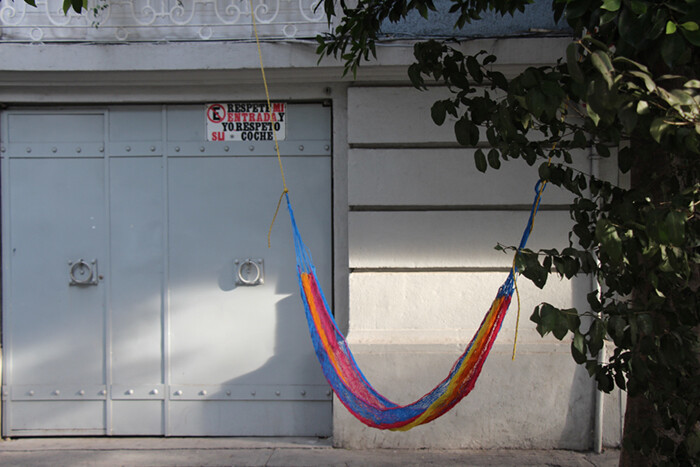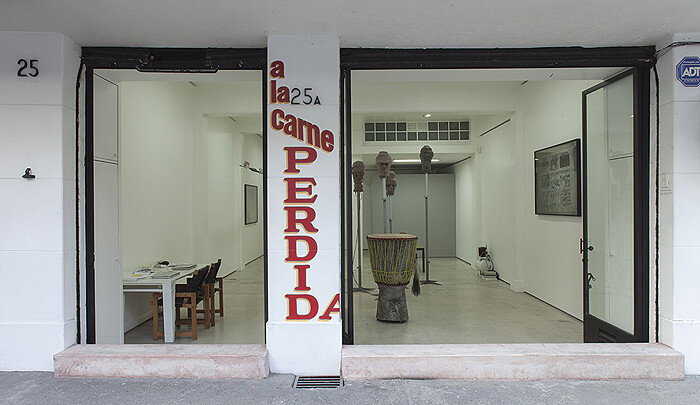Categories
Subjects
Authors
Artists
Venues
Locations
Calendar
Filter
Done
April 16, 2013 – Review
Mexico City Dispatch: Zona Maco Sur and Gallery Openings
Gabriela Jauregui

The Zona Maco art fair week (April 10–14) got off to a good start with the notion of a nude bird at Etienne Chambaud’s exhibition at LABOR called “The Naked Parrot.” The path was there, the bird absent. Rainbow-colored bird shit, echoed in the emailed invitation image of multicolored pigeons, outlined a zigzag trajectory through the gallery, under a fragile crisscross of severed bronze heads punctured by steel beams, titled The Fractal Zoo (2013). It left us to wonder: who are the animals inside this gallery-turned-cage? The yellow-pink-orange-blue-green shit road (from pigeons which the artist had fed colored pellets) marked an auspicious beginning for the journey that would end at Maco itself, a journey which included a fauna of art goers from all over the world teetering through Mexico City, from one opening to the next, in high heels and spring suits.
But it was last Tuesday that truly marked the gallery opening marathon, starting with Edgardo Aragón at Proyectos Monclova. The highlight of his show, which focused on land rights and violence, mostly in his native state of Oaxaca, was what the artist called his “portrait” of Zapata, titled, appropriately, Zapata (2013): a black marble box containing earth from the …
November 6, 2012 – Review
Jean-Marie Perdrix’s “A Carne Perdida"
Chris Sharp

One thing I have noticed about Mexico is a proclivity to let no part of an animal go to waste. Just the other night, I was in a famous twenty-four-hour taquería, El Borrego Viudo, and on the menu were not only cabeza (lamb’s head) and lengua (beef tongue), but also sesos (need I translate?). It is perhaps only a coincidence that the work of Paris-based artist Jean-Marie Perdrix abides by a similar ethic, but a coincidence that nonetheless sits comfortably within the local context. That ethic, however, is anything but straightforward.
Take, for example, one of the sculptures on view here, the large djembe drum (Untitled, 2011). This apparently unremarkable object represents the years of research in Burkina Faso, during which Perdrix sought a means to recuperate and put to good use the over-abundance of plastic trash bags that afflicts the region like a plague. Having developed a non-toxic technique to melt the plastic down into a solid material, he has also found structurally and culturally relevant uses for it, such as for the making of crossbeams and djembe drums. Both an emblem of civic virtue and a process-driven sculpture, the dynamic object would seem to be unsullied by any but …